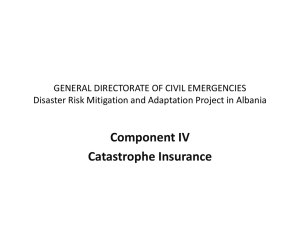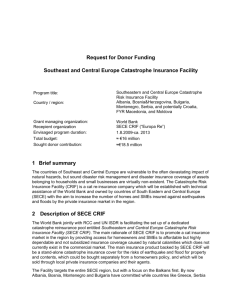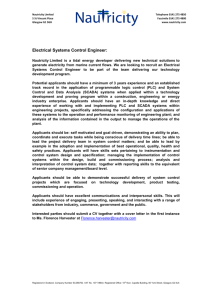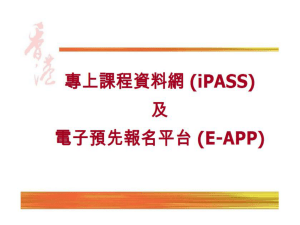2014-2015 RAC End of Year Report
advertisement
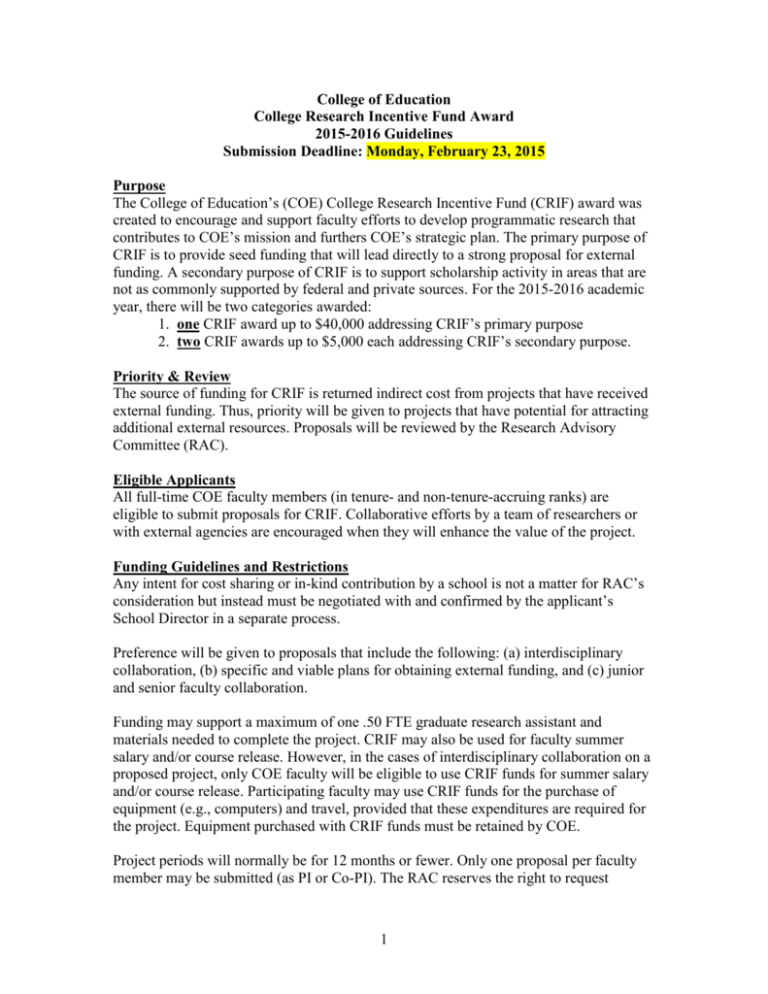
College of Education College Research Incentive Fund Award 2015-2016 Guidelines Submission Deadline: Monday, February 23, 2015 Purpose The College of Education’s (COE) College Research Incentive Fund (CRIF) award was created to encourage and support faculty efforts to develop programmatic research that contributes to COE’s mission and furthers COE’s strategic plan. The primary purpose of CRIF is to provide seed funding that will lead directly to a strong proposal for external funding. A secondary purpose of CRIF is to support scholarship activity in areas that are not as commonly supported by federal and private sources. For the 2015-2016 academic year, there will be two categories awarded: 1. one CRIF award up to $40,000 addressing CRIF’s primary purpose 2. two CRIF awards up to $5,000 each addressing CRIF’s secondary purpose. Priority & Review The source of funding for CRIF is returned indirect cost from projects that have received external funding. Thus, priority will be given to projects that have potential for attracting additional external resources. Proposals will be reviewed by the Research Advisory Committee (RAC). Eligible Applicants All full-time COE faculty members (in tenure- and non-tenure-accruing ranks) are eligible to submit proposals for CRIF. Collaborative efforts by a team of researchers or with external agencies are encouraged when they will enhance the value of the project. Funding Guidelines and Restrictions Any intent for cost sharing or in-kind contribution by a school is not a matter for RAC’s consideration but instead must be negotiated with and confirmed by the applicant’s School Director in a separate process. Preference will be given to proposals that include the following: (a) interdisciplinary collaboration, (b) specific and viable plans for obtaining external funding, and (c) junior and senior faculty collaboration. Funding may support a maximum of one .50 FTE graduate research assistant and materials needed to complete the project. CRIF may also be used for faculty summer salary and/or course release. However, in the cases of interdisciplinary collaboration on a proposed project, only COE faculty will be eligible to use CRIF funds for summer salary and/or course release. Participating faculty may use CRIF funds for the purchase of equipment (e.g., computers) and travel, provided that these expenditures are required for the project. Equipment purchased with CRIF funds must be retained by COE. Project periods will normally be for 12 months or fewer. Only one proposal per faculty member may be submitted (as PI or Co-PI). The RAC reserves the right to request 1 additional clarifications or revisions to a PI’s budget prior to recommending the proposal for funding. Applicants not agreeable to the approved funding may elect to withdraw their application and participate in the competition in a subsequent cycle. Applications for Category 1 (Primary Purpose) should clearly support the pursuit of external funding during the next funding cycle. Applicants will articulate a clear plan, funding source, and competition for the subsequent proposal for external funding. Applications for Category 2 (Secondary Purpose) should clearly support faculty scholarly development and may not be used to pursue entrepreneurial endeavors. Applicants will articulate a clear plan, funding source, and competition for the subsequent proposal for external funding. Particular consideration will be given to proposals addressing socially significant issues in areas that are not as commonly supported by federal and private sources. Proposal Content and Format Following the cover page (Attachment A), the proposal narrative should be presented in no more than five single-spaced, typewritten pages (excluding Abstract, References, Budget, and Budget Narrative). No other materials or appendices should be included, except as specified below. 1. Abstract: The abstract should be limited to 250 words and summarize the proposed project. 2. Goals: Applicants should present concise, specific long-term goals and short-term objectives, the rationale for the project, and a summary of the relevant literature when appropriate. 3. Pursuit of External Funding: In particular, applicants must explain how the project will enhance their capacity to generate external funding. In identifying long-term goals, applicants should describe the program of research they have conducted leading up to proposal submission and how the proposed project builds upon previous scholarship. The short-term objectives of the proposed project should represent an essential next step that leads to the applicant’s long-term goals. Applicants must also link proposed research to the gaps in current knowledge. 4. Significance: Applicants should discuss the scholarly and/or scientific merit of the project and indicate how the project’s specific objectives will help them reach their long-term professional goals, including the goal of garnering external funding. Depending on the context of the work, various areas could be addressed (e.g., necessity for the project, contributions to their field of scholarship, departure from previous directions). Applicants should explain how the award would lead to a significant increase in their research productivity in future years and enhance their future opportunities for external funding. 5. Plan: In the plan for implementation, applicants should: a. Describe the methods and procedures. Present the work plan in a manner similar to submitting a proposal to a funding organization(s). When relevant, discuss the logic of the research design, data collection methods, analysis, and dissemination of the results. b. Delineate the time frame and availability of subjects, equipment, and/or 2 facilities as appropriate. Include a letter of support or cooperation from directors of agencies or facilities participating in the project. c. Identify the funding organization(s) and specific program(s) through which future funding may be sought. Discuss any interaction you have had with the organization(s). Provide a timetable correlating your work plan with the preparation and submission of preliminary and final proposals in accordance with agency deadlines. 6. Deliverable Product: The completed proposal should specify a deliverable product that will be provided by the end of the funding period. Examples of such products could include (but are not limited to): a. Proposal for an expanded project prepared for submission to a specific external agency for funding. b. Final report of a pilot test of research methodology (e.g., an instrument and manual with results of preliminary validation) with a specific plan for next steps. c. Instructional materials/technology/software developed and tested during the course of the project with results and a plan for its use in future research projects. d. Manuscript submitted for publication that disseminates results of project. At the end of the performance period, recipients will provide a report of CRIF expenditures as part of their deliverable product. 7. Qualifications: Researcher qualifications to conduct the proposed project should be described, including previous publications, funded work, or academic preparation in this area. In addition to the proposal narrative described above, the following items should be included: 1. Budget: Include a one page, itemized budget for expenditures (See Attachment B) and one page budget narrative, explaining each budgeted item. 2. Previous CRIF Funding: If applicable, include a one page report to (a) list previous CRIF funding (project title, funded amount, funding period) and (b) document the outcome(s) (e.g., funded grants, published manuscripts, etc.) specific to previous CRIF funding. Submission Completed proposals must be submitted electronically to the Office of Educational Research at research@coe.ufl.edu by 5pm on Monday, February 23, 2015. 3 Attachment A College Research Incentive Fund (CRIF) Award Cover Page Check CRIF proposal category: _____Primary ____Secondary Principal Investigator (PI): Co-Principal Investigator (Co-PI): PI UFID Number: PI Campus Address: Telephone (office): Project Title: PI Signature (date) Co-PI Signature (date) School Director (date) School Director (date) If more PIs and/or School Directors/Department Chairs are signing, please include on an additional sheet. Do Not Complete – For CRIF Committee Use Only TOTAL CRIF FUNDS REQUESTED = $_______ TOTAL CRIF FUNDS APPROVED = $________* 4 Attachment B College Research Incentive Fund (CRIF) Award Guideline for Budget Itemization & Narrative Section 1: Personnel costs such as Salaries Graduate Assistant stipend (requires tuition allocation, see next section) Student Assistant stipend (does not require tuition allocation) Fringe benefits Other OPS (please list by position) Section 2: Graduate Assistant Tuition Section 3: Expenses such as Travel Materials Technology (hardware, software) Postage (where applicable) Telephone (where applicable) Special supplies Copying/printing Section 4: Other: (please list) 5
